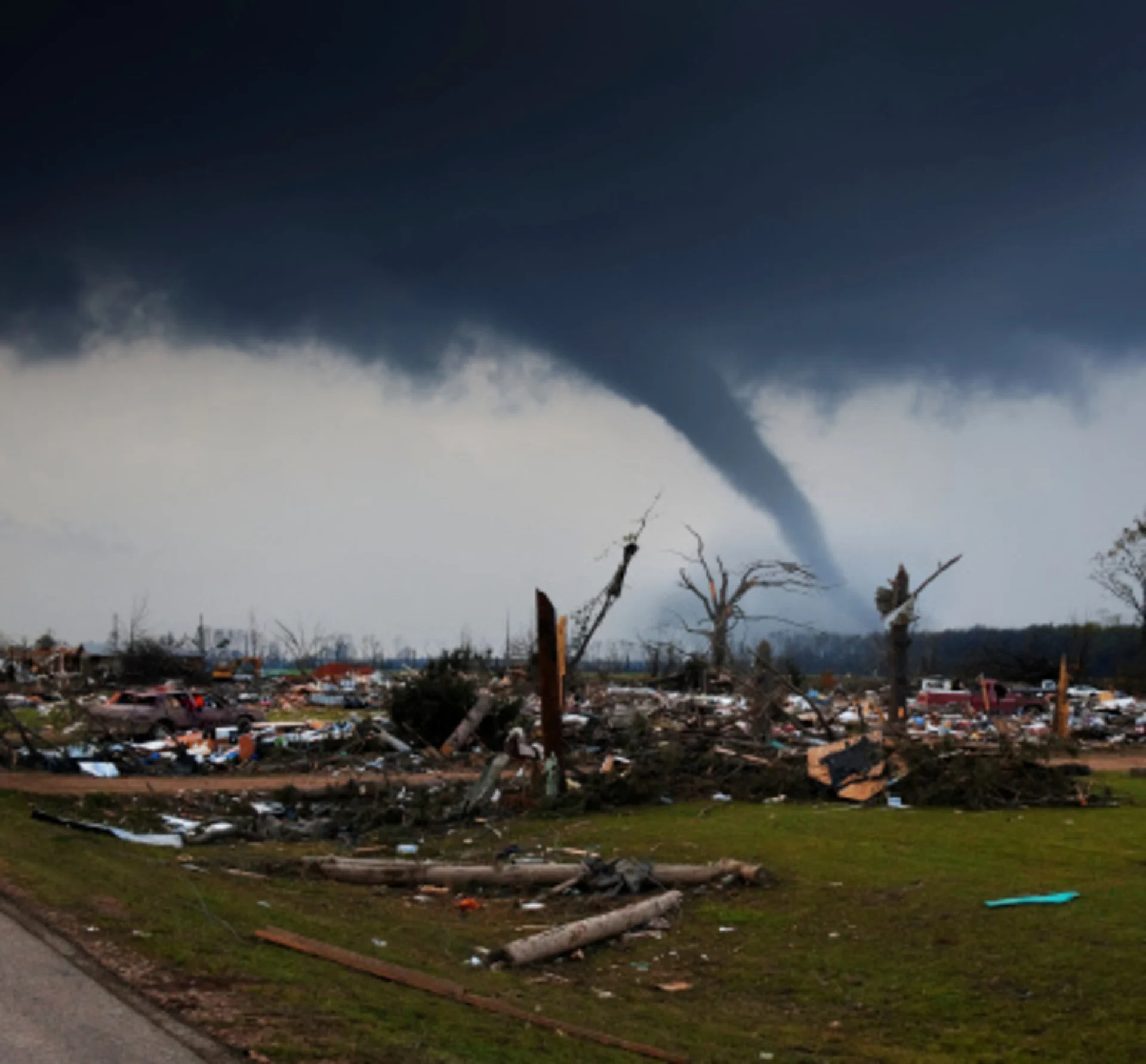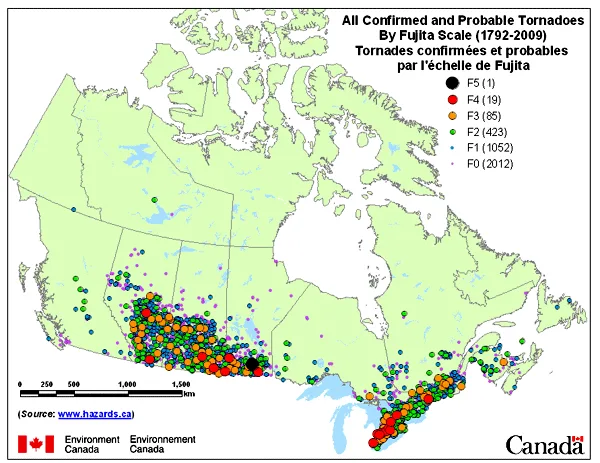
Why people ignore severe weather warnings (or do they?)
"It came out of nowhere." "The storm hit without warning." "I didn't expect it to hit my house."
These are familiar statements in the wake of severe weather events, especially when disasters like tornadoes turn deadly.
They often leave forecasters scratching their heads, though, as in the case of the tornado in March 2019 that killed 23 people in Alabama. Warnings were issued for those storms well in advance; in fact, severe weather forecasters were talking about the potential for tornadoes a full day beforehand.
So why was the loss of life so high?
WHY DON'T PEOPLE ACT? OR, DO THEY?
Perhaps not surprisingly, this turns out to be a complicated problem and it spans the gap between the science of meteorology and the social science of weather communication -- the link between the information people receive and what they do with it.
There's a growing body of research into the public's perception of severe weather warnings, but it's still a field that lags behind forecasting of severe weather.
It's pretty safe to say, though, that we all have experiences with severe weather warnings, and those experiences will influence how we react to future warnings.
Dr. Kim Klockow-McClain, a scientist at the Cooperative Institute for Mesoscale Meteorological Studies, is working at the forefront of how people interpret weather information, and she points to this familiarity as part of what makes a person's response to a weather warning hard to predict.
One of the difficulties forecasters face when it comes to issuing warnings, both in the U.S. and here in Canada, is that most severe thunderstorms and tornadoes are small versus the size of the warning area. Unfortunately, predicting the exact motion and behaviour of a storm cell, or particularly of a tornado, is still beyond the limits of meteorology outside of a very short time frame.
When you're tasked with public safety, as both Environment and Climate Change Canada (ECCC) and the U.S.'s National Weather Service (NWS) are, you need to adopt a balance that favours over- rather than under-warning the public. But that means that, say, a tornado that is a mile wide can be surrounded by a warning area that covers an entire county.

(Above, the public alerts map showing alert regions for Canada. Image courtesy ECCC.)
"People are really savvy about this," Klockow-McClain told NPR. "They know that even if a region in general is at risk, that doesn't necessarily mean there will be a tornado that hits their house.
"So people wait until things get quite close until they make those calls. For tornadoes, they typically wait until they're under a warning and then there's just a couple of minutes."
Just because they aren't immediately taking shelter doesn't mean that they're not doing anything, though.
Dr. Julie Demuth, a Research Scientist at the National Center for Atmospheric Research who is also focusing on the social science side of severe weather, says that while the focus tends to be on one outcome -- namely "Did someone seek shelter after they heard the warning?" -- there are other actions that count, too, like seeking and sharing additional information, or sharing that information with someone who wouldn't have gotten it otherwise. "They might go outside and assess the risk," Demuth said, speaking on the Weather Geeks podcast, "they might do any number of other things that then lead them; that we know are part of how people assess their risk and make a decision."
Going outside to 'see for yourself' is a big component in what Klockkow-McClain has found in her research into what she calls "the folk science" of tornado and severe weather warnings.

THE 'FOLK SCIENCE' OF TORNADOES
In a study of the deadly 2011 tornado outbreak, which claimed more than 300 lives and caused thousands of injuries, Klockow-McClain and her team describe this folk science as the kinds of things people notice, or come to believe, about their surroundings when they've lived somewhere for a long time.
"When people go through multiple tornadoes, they learn from those events and some of the lessons they carry away are a little bit interesting," Klockow-McClain told NPR.
Many of those lessons tend to fall under what meteorologists call "weather myths" -- like the idea that a tornado won't cross a river or other body of water, or they can't climb hills, or will be inclined to track along a highway. Others tie into a person's observations of previous storms in their area; the idea that 'storms always go north of here' -- an effect Klockow-McClain refers to as optimism bias, or the simple belief that 'home' is a safe place.
"One of the biggest struggles for [those interviewed in the wake of the 2011 outbreak] was internalizing the possibility that a tornado could hit them directly," says the team. "Believing there was a tornado was one thing, while personalizing its risk to their location was another."

And while it might sound foolishly optimistic on the surface, people who have a hard time believing a tornado will hit them aren't exactly wrong.
"Even within a given event, less than 1 per cent of the spatial extent of a tornado-warned area will actually experience a tornado, and about 70 per cent of all tornado warnings will result in false alarms."
Unfortunately, until we reach the point of tracking individual storms down to that 1 per cent range, there's no way to know if your house will defy the odds.
Local knowledge and 'folk science' come into play, here, too, as Klockow-McClain points out. The study of the 2011 storms found that people were often influenced to take action based on a gut feeling, the wording or composure of a local weather reporter, or by going outside to judge the state of the sky for themselves.
COMPLEX, NOT COMPLACENT
So while an emergency manager or meteorologist might view people who don't take immediate shelter in the face of a severe weather warning as complacent, that judgement isn't as straightforward as it might seem.
"In some ways, 'complacent' kind of functions as a placeholder for things we don't see people do, or things we don't understand about them," Dr. Jen Henderson, a Postdoctoral Fellow with the Cooperative Institute for Research in Environmental Sciences said on Weather Geeks. "So when we say somebody's being complacent, in some ways I feel like maybe we're asking ourselves, "Well why aren't they taking actions?" because we don't see the actions they're taking -- they're not taking the action we're looking for."
As we saw in the examples above, it's unusual for someone to hear that they're under a weather warning and do nothing at all.
"Largely, from the interviews and focus groups we've done, people are not complacent," says Henderson. "They're all taking action, it's just not the actions we'd expect or we can see. We have to ask them about how they're processing this information."
Bridging that gap -- between basic weather information and peoples' response to it -- is a key area of research for the future of severe weather communication, and Klockow-McClain and her fellow researchers say it starts with understanding where these folk beliefs come from.
"To be sure, if meteorologists are heard as they wish to be heard, they need to take some time to listen to —- and understand —- what the people "out there" are seeing and hearing."





